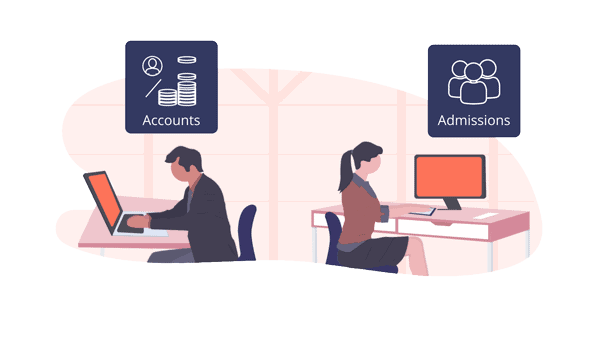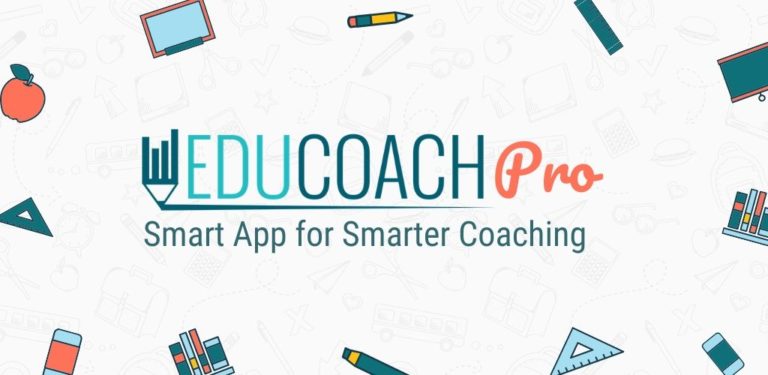Introduction
The educational landscape is undergoing a significant transformation, and it is becoming increasingly important for institutes to embrace e-learning. Traditional education systems are facing numerous challenges, ranging from limited resources and accessibility issues to inflexible learning environments. Thankfully, the potential of e-learning as a solution is promising. By implementing an e-learning platform, institutes can benefit greatly and provide students with a dynamic, personalized, and engaging learning experience.
Enhanced Learning Experience

Self-Paced Learning: Empowering Students to Learn at Their Own Speed
In a traditional classroom setting, students often struggle to keep up with the pace of the lessons or feel held back by slower learners. However, with an e-learning platform, students can engage in self-paced learning. They have the freedom to revisit, pause, or accelerate their learning according to their individual needs. This empowers students to take control of their education and enhances their overall learning experience.
Interactive Multimedia Content: Engaging and Retaining Students’ Attention
One of the remarkable benefits of implementing an e-learning platform is the ability to incorporate interactive multimedia content. Combining text, images, videos, and audio not only grabs students’ attention but also caters to different learning styles. The use of interactive quizzes, simulations, and games encourages active participation, making the learning process enjoyable and memorable.
Personalized Learning: Tailoring Education to Individual Students’ Needs
Every student is unique, with their own strengths, weaknesses, and learning preferences. E-learning platforms enable institutes to provide personalized learning experiences by tailoring education to individual students’ needs. Through adaptive learning algorithms and machine learning, the platform can analyze students’ performance data and deliver targeted content, addressing their specific learning gaps and ensuring optimal progress.
Improved Accessibility and Flexibility

Overcoming Geographic Boundaries: Reaching Students Worldwide
One of the most significant advantages of e-learning is its ability to overcome geographic boundaries. With a well-established e-learning platform, institutes can extend their reach to students in remote areas or even across borders. This opens up opportunities for individuals who may not have access to quality education, ultimately promoting inclusivity and equal educational opportunities for all.
Removing Time Constraints: Enabling Learning Anytime, Anywhere
Traditional education often restricts students to fixed schedules, making it challenging for those with other commitments or unconventional circumstances. By implementing an e-learning platform, institutes can remove time constraints and enable students to learn at their preferred time and location. Whether it’s studying in the early morning or late at night, e-learning provides the flexibility that empowers students to balance their education with other responsibilities.
Catering to Diverse Learning Styles: Providing Options for Different Learners
Every student has a unique learning style, and traditional classrooms may not always accommodate these differences. E-learning platforms offer a variety of instructional methods, allowing institutes to provide options that cater to different learning styles. Whether it’s visual, auditory, or kinesthetic, e-learning ensures that each student receives an education tailored to their preferred style of learning.
Enhanced Collaboration and Communication
Facilitating Peer Interaction: Promoting Collaborative Learning
Collaborative learning is an essential aspect of education, as it fosters critical thinking, problem-solving skills, and social interactions. E-learning platforms provide tools and features that promote peer interaction, such as discussion forums, group projects, and virtual classrooms. Students can collaborate with their peers, share ideas, and learn from one another, enhancing the overall learning experience.
Seamless Communication: Connecting Students, Teachers, and Administrators
Effective communication plays a vital role in education, and e-learning platforms bridge the gap that may exist in traditional classrooms. Through various communication channels, such as messaging systems, video conferencing, and email integration, students can easily reach out to their teachers and administrators for clarification, feedback, or any other educational support they may require.
Foster Student-Teacher Engagement: Encouraging Meaningful Interactions
In a traditional classroom, some students may hesitate to ask questions or participate actively due to time constraints or fear of judgment. With an e-learning platform, students have the opportunity to engage with their teachers in a more comfortable and less intimidating environment. Teachers can provide personalized feedback, guidance, and support to each student, fostering meaningful interactions that promote a deeper understanding of the subject matter.
Cost and Resource Efficiency

Reduced Infrastructure Costs: Minimizing the Need for Physical Classroom Facilities
Traditional education often requires extensive physical classroom infrastructure, including classrooms, desks, and other resources. By adopting an e-learning platform, institutes can significantly reduce infrastructure costs. Students can access educational materials from their personal devices, eliminating the need for large classroom spaces and reducing maintenance and utility expenses.
Scalable and Sustainable: Expanding Reach without Adding Excessive Resources
As institutes continue to grow and expand, accommodating an increasing number of students can be challenging. E-learning platforms offer a scalable and sustainable solution. By adding more virtual courses and resources to the platform, institutions can expand their reach without the need for excessive resources or compromising the quality of education.
Enhanced Resource Utilization: Maximizing the Value of Educational Materials
With an e-learning platform, educational materials can be stored digitally, allowing institutes to leverage their resources more effectively. Instead of continuously purchasing physical textbooks or printed worksheets, institutes can invest in developing high-quality digital content that can be easily shared and accessed by students. This maximizes the value of educational materials and reduces unnecessary expenditures.
Increased Data-Driven Insights

Assessing Learning Progress: Utilizing Analytics for Effective Evaluation
E-learning platforms provide institutes with powerful analytical tools that enable the assessment of students’ learning progress. By analyzing data points, such as quiz scores, time spent on tasks, or completion rates, institutes can gain valuable insights into students’ strengths and areas that require improvement. This data-driven decision-making enhances the evaluation process and allows for targeted interventions, ensuring every student receives the necessary support.
Identifying Knowledge Gaps: Enhancing Targeted Interventions
Through data analytics, e-learning platforms can identify specific knowledge gaps that students may have. With this information, institutes can design targeted interventions to address these gaps effectively. By providing personalized learning paths, additional resources, or remedial materials, e-learning platforms empower institutes to cater to individual students’ needs and facilitate their continuous growth.
Tracking and Improving Outcomes: Guiding Institutional Decision-Making
E-learning platforms’ data-driven insights go beyond evaluating individual students; they also assist in tracking and improving institutional outcomes. Institutes can analyze aggregate performance data to identify trends, patterns, and areas of excellence or improvement. These insights enable institutes to make informed decisions regarding curriculum enhancement, instructional strategies, or resource allocation, ultimately improving the overall quality of education.
Summary
In conclusion, implementing an e-learning platform brings numerous benefits to educational institutes. It enhances the learning experience through self-paced learning, interactive multimedia content, and personalized education. It improves accessibility and flexibility by overcoming geographic boundaries, removing time constraints, and catering to diverse learning styles. Moreover, it fosters collaboration, communication, and student-teacher engagement, while also promoting cost and resource efficiency. Finally, e-learning platforms provide valuable data-driven insights, improving evaluation processes, enhancing targeted interventions, and guiding institutional decision-making. To stay competitive in the ever-changing field of education, embracing e-learning is no longer an option but a necessity.
FAQs
Can e-learning completely replace traditional classroom teaching?
While e-learning offers numerous benefits, it cannot completely replace traditional classroom teaching. Traditional classrooms provide social interactions, hands-on experiences, and immediate feedback that are essential elements of the learning process. However, e-learning can complement traditional teaching methods and provide a flexible and personalized approach to education.
How can institutions ensure the quality of e-learning programs?
To ensure the quality of e-learning programs, institutions should invest in comprehensive content development, instructional design, and curriculum evaluation. Collaboration with subject matter experts, continuous assessment of learning outcomes, and soliciting student feedback are also critical. Institutes should also comply with industry standards, conduct regular evaluations, and provide professional development opportunities to instructors.
What are the security measures in place to protect online educational platforms?
Online educational platforms implement robust security measures to protect user data and maintain the integrity of the platform. These measures include secure data encryption, user authentication protocols, regular security audits, firewall protection, and redundancy to prevent data loss. Additionally, institutes should educate users about safe online practices and implement proper access controls to protect sensitive information.







